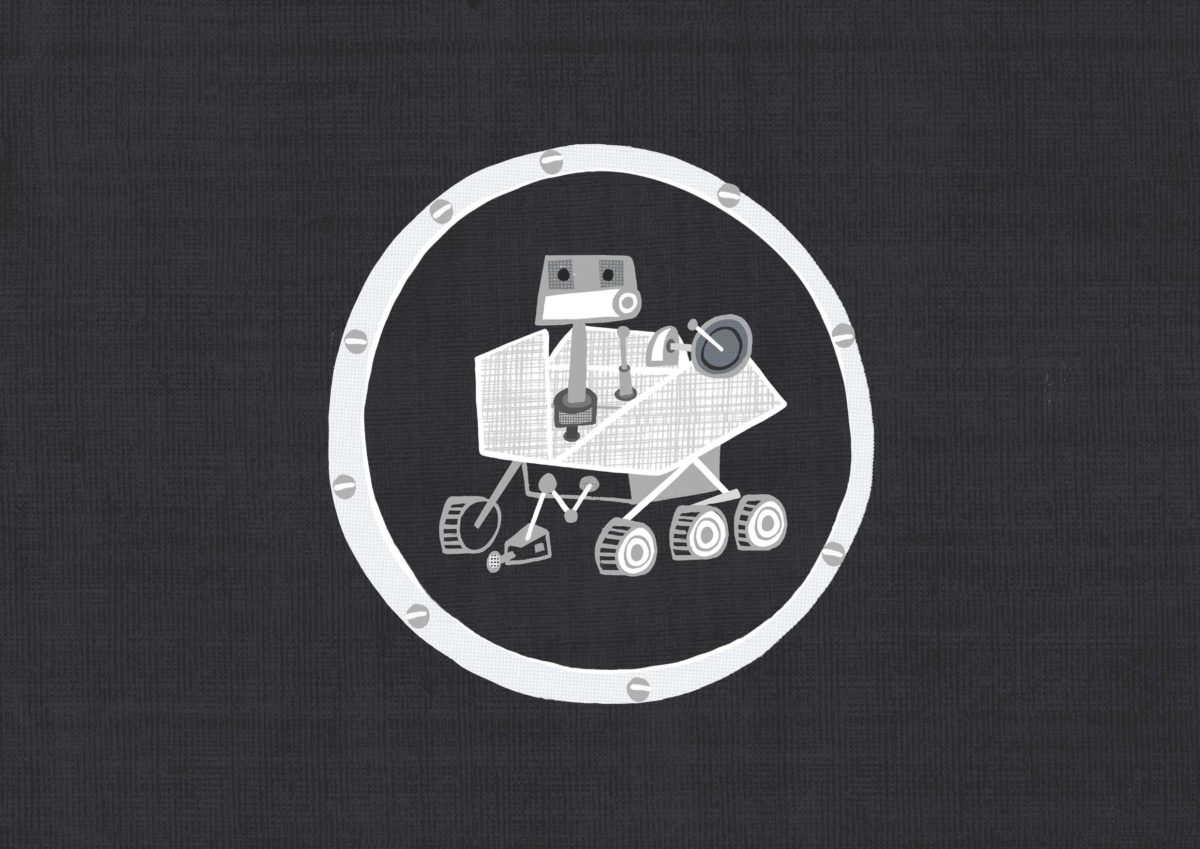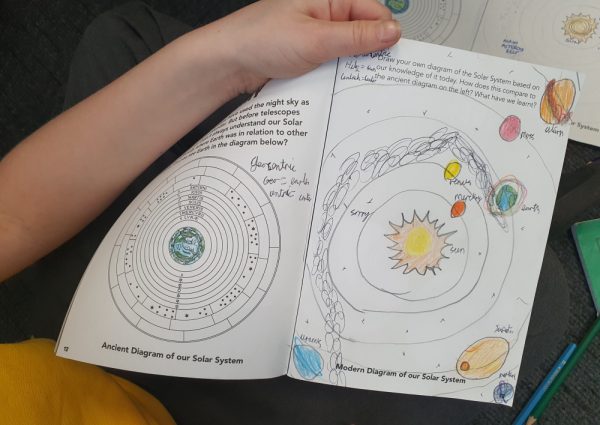You can even use some of these expansion activities as a way to set Mars Diary homework and encourage parent participation.
Here we look at each activity in Chapter Three: Your New Home.
Activity 3.1: Weather on Mars

This activity tackles the complex topic of weather on Mars in a visual and creative way. Students will create their own infographic (or visual interpretation) of Mars weather data. They will think about what weather is and how is occurs. They will learn that only planets with atmospheres have weather. Students will also have to think about how we forecast the weather on Earth and what sort of information is made available to allow humans to plan their activities.
Expanding this activity as a written exercise:
Research different weather conditions around the globe. Identify reasons why they vary. Show findings as a news article, or for an extra challenge write experiences based on assumed perspectives of those who live different climates – what is good about it, the various struggles, food and what grows etc. This could be used as a comparison to climates on Mars and children can write how they might think astronauts would find the new climate based on where they are from and their different training for life on Mars.
Prepare and film a TV weather report for Mars (optional – use a green screen and project an image of Mars as a backdrop). Children can write a script based on their research.
Create a poster all about the climate of Mars.
Useful Links:
- Daily weather reports from Curiosity available @MarsWxReport on Twitter and online
- Animated clip by NASA about climate on Mars
Activity 3.2: Breaking News

The discovery of water on Mars gives scientists their clearest sign yet that there may be life on Mars – both now and in the past. Students will need to think about the Martian past and how the planet has changed over time as well as considering the importance of water to life and why scientists believe water is such a key part of discovering life on another planet.
Expanding this activity as a written exercise:
As Breaking News is already a writing exercise we would suggest trying different types of writing to expand on it.
While doing the water study section of this activity, ask children to do some scientific writing to help them understand what they’re learning. They can then use this as quotes or facts for use in their article.
Children could also find out about how deserts are formed on earth and think about how this could apply to other planets. A creative writing challenge could be initiated about an astronaut roaming a martian desert.
Useful Links:
- Based on research conducted by NASA’s MAVEN spacecraft, this clip shows the evolution of Mars from a green planet 4 billion years ago to the frozen desert we know today. The spacecraft shown at the end of the clip is MAVEN.
Activity 3.3: Mighty Mons

This activity introduces students to the study of rock formations and how a planet is shaped by the presence of geological features. By creating a diagram of a volcano, students will familiarise themselves with the impact that landscape has on the potential for life. It also challenges students to interpret an image from above and recreate it as seen from the ground.
Expanding this activity as a written exercise:
Persuasive: Ask students to persuade readers that Olympus Mons is larger than Mount Everest. How do we know this is true?
Poetry/Narrative: Talk to students about Edmund Hillary and how he was the first person to scale Mt. Everest. Show them examples of how he felt after completing the climb and how it impacted his life. Ask them to write a poem or story about the first astronaut to climb Olympus Mons drawing on Edmund Hillary’s experience.
Useful Links:
- Five-minute clip about super volcanoes on Mars, produced by Nature Video
- Image of Olympus Mons vs Arizona
- Image of Olympus Mons vs France
- Edmund Hillary for kids
Activity 3.4: Design Your Mars Rover

In this creative and technical design challenge, students will have to think about what functions they require a rover to deploy while working together on the surface of Mars. Students will have to consider the differences between human and robotic exploration – and think about the strengths and weaknesses of both kinds.
Expanding this activity as a written exercise:
There is plenty of scope to expand on this activity. Children can explore how rover designs have developed over time as more missions have been sent to Mars or investigate how the rover might need adapting to visit other planets.
Children could write instructions on how the rover works, annotate their design sketches and Upper KS2 students could write an explanation about how the rover works. Encourage children to answer ‘why’ when explaining and expand on simple details.
Combine this activity with the Design Your Rocket from the previous chapter and make an engineering corner in the classroom. Ask them to put on the engineering hats and write questions about the ways things around us work – encourage curiosity and help them to draw comparisons to everyday objects. What on Earth is most like a rover or most like a rocket? How could the way in which a toaster/hairdryer/car/plane works help us design a space vehicle?
Useful Links:
- Interactive diagram of NASA’s Mars rover ‘Curiosity’
- ESA clip showing animation of ExoMars collecting rock samples, and also the Martian terrain
///
Each activity in the Mars Diary comes with detailed Teaching Notes that provide a wealth of information and ideas on how you can adjust each activity for your classes learning level and how you can expand on each one for maximum cross-curricular learning. Download the Teaching Notes for each activity on the activity’s webpage.
Remember, Mars Diary activities are aimed at children aged 7-11, but can be easily adapted for most primary levels. If you ever have any questions or aren’t sure where to find any of our resources or support materials, just email us! We’re here to help.



